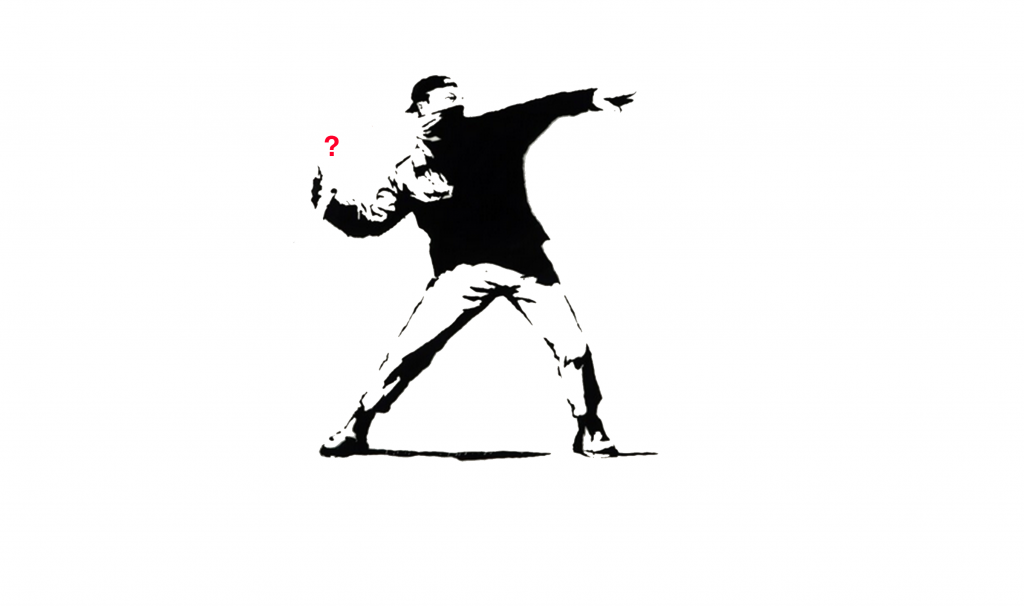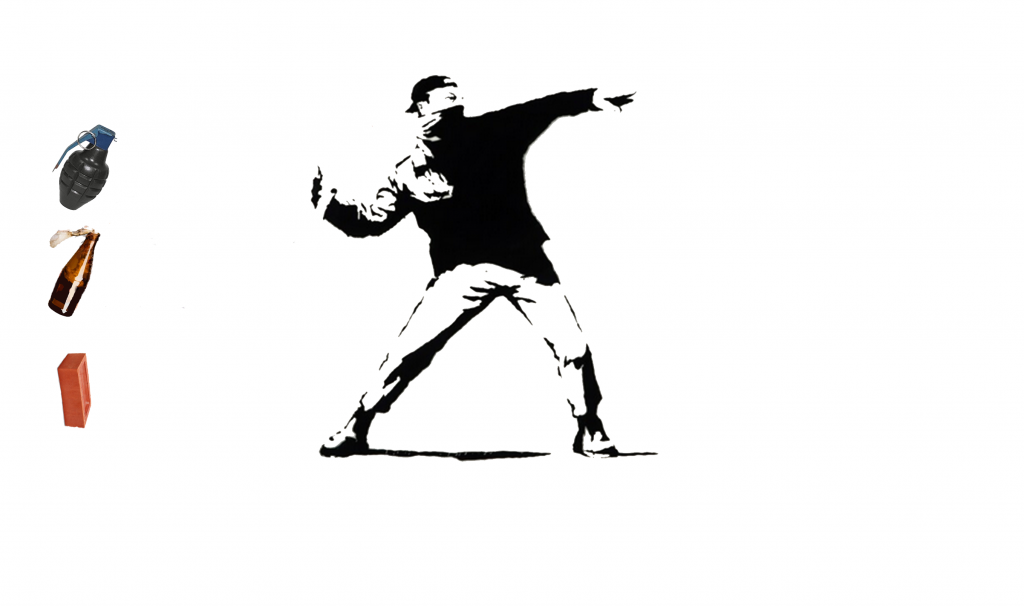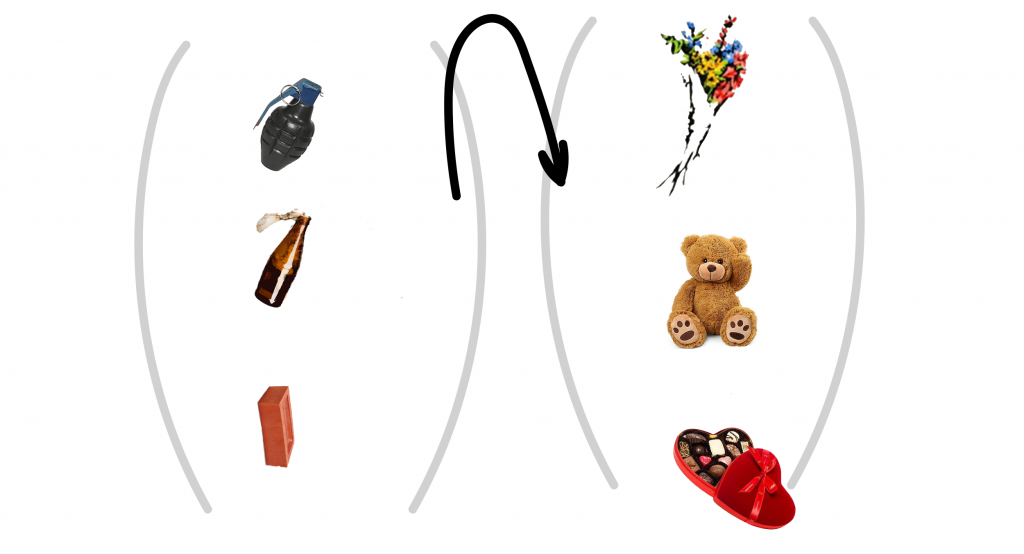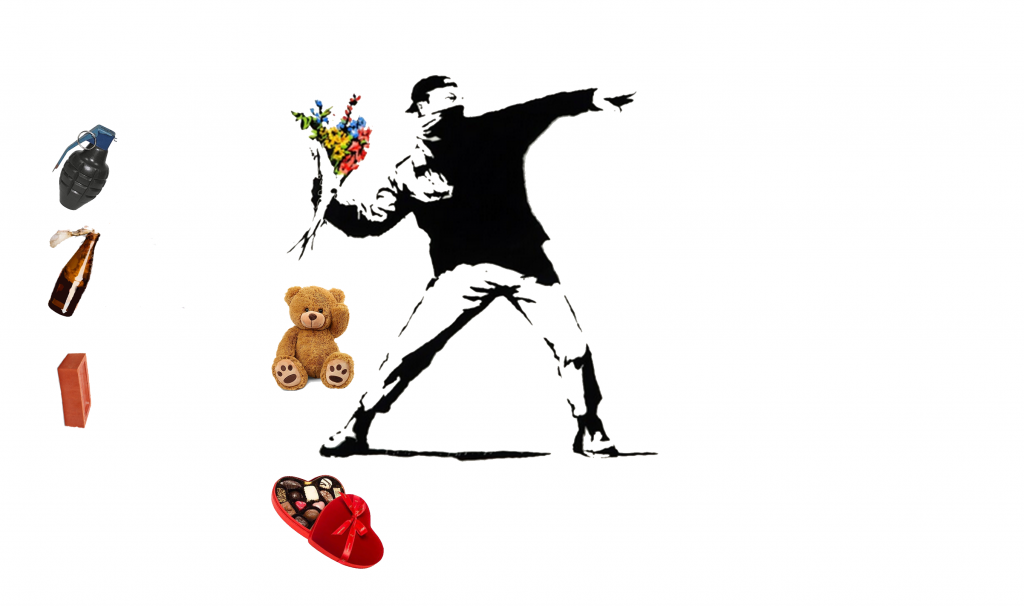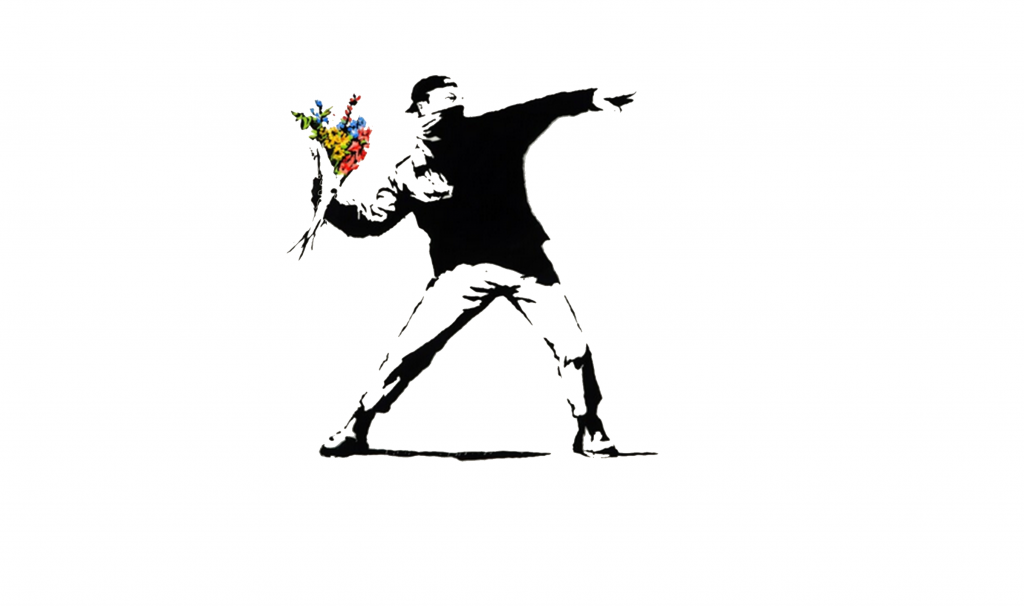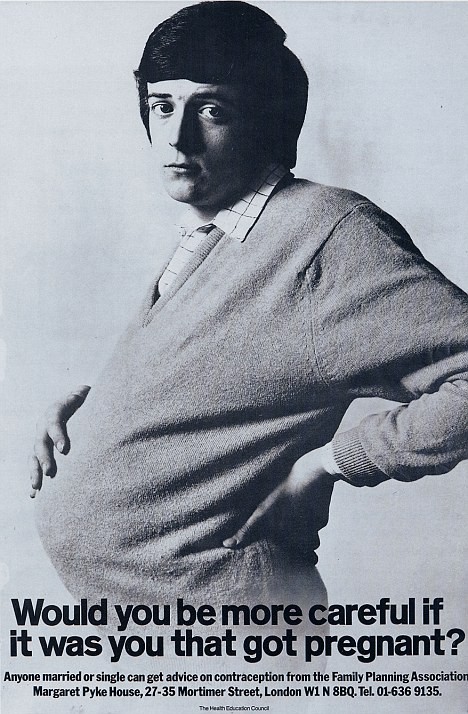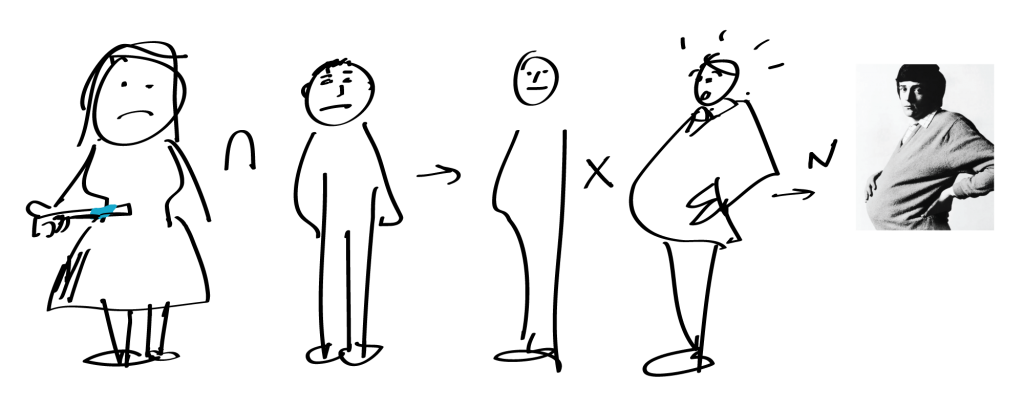Start with a really strong visual item with its own very clear value set. This image is about violence, rebellion, unrest, protest, anti-authority etc.
Over control and obsession with health and safety is the biggest killer of creativity. And it seems parents in the UK have become masters of it, but not so in Germany and Denmark. Maybe as this video suggests, because they were able to observe what kids were doing on bomb sites after the war. It’s tempting to link this with a lower child suicide rate in these countries too. Whatever your parental notions are, the lessons for creativity are clear. It’s a messy business and if you over protect you ultimately stifle.
“The ad made headlines all over the world when it came out. It was such a bombshell, one of the most controversial ads ever. There were questions in Parliament about the propriety of running such an ad, especially in the government’s name. It made a furore all around advertising and beyond, all over the world.
The client was delighted, even more so after it had made such a fuss, because that put it on the map. I hope it did some good. It’s weird to me that it’s made such an impact and still makes an impact. Because in photographic terms, what is it? A picture of a bloke. I find it pretty baffling really.”
Alan Brooking was the photographer of “Pregnant man”
How do you get the pregnant man from a proposition that says “Be more careful about getting your girlfriend pregnant”?
Answer: Start with every related idea around pregnancy. Especially the ones that are so obvious you no longer see them.
Especially the rule that says men don’t get pregnant. Turn this upside down.
Then exaggerate it so they get very pregnant – just like a woman close to term.
Finally, make it look the most normal thing in the world. To sum up: Start with a trope, invert it, exaggerate and normalise.
When the above process is done, you’ve created a symmetry across the impossible. On one hand your brain sees the logic of it and on the other it fights the impossibility. The power of the communication comes from this.
In another example of creating ideas by creating symmetries is shown in the following idea for Robinson’s Barley Water. This is a sketch of the ad.
The idea starts with mapping out the form of a tennis ball on an orange and then normalizing it. The visual is such so closely symmetric you hardly notice the orange dimples on the tennis ball.
Henry Ford and the car cow symmetry
Predictive text and symmetry with opposite
Jet engine and mushroom symmetry
Banksy and inversion of value sets

There have been many funky things you can do with the design of a bike stand, and I’ve had to lock my bike to quite a few of them. Some of them are really annoying because they allow a bike to topple over. But this one I spotted in Islington is a breath of fresh air. And like all neat creative ideas, it starts by asking a question no one else had bothered to ask: What would bike parking look like if it were designed by someone who wasn’t a cyclist or a road engineer? What if it were designed by a landscape gardener? The ability create different answers starts with the ability to ask different questions. And follow them through to interesting conclusions.
We don’t always know what creativity is. But we sure know what it isn’t.
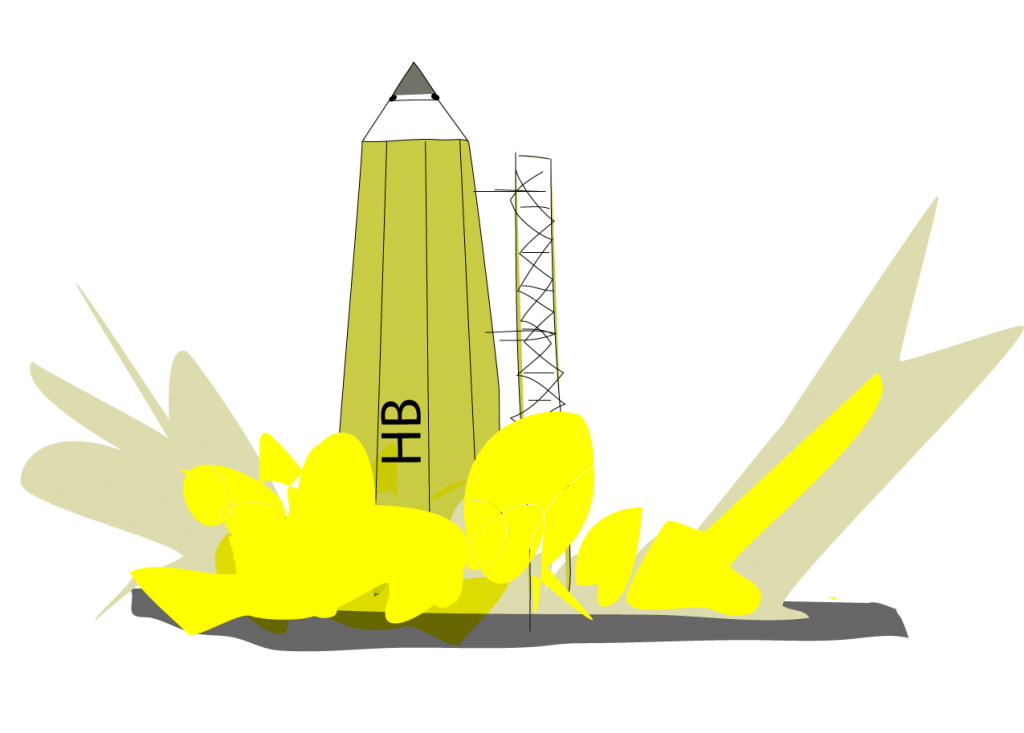
Organisations often complain they don’t have enough resources to throw at a problem but you could argue it’s the abundance of the wrong type of resource that stops the job being done really well.
The perfect and well-known example of this: the anecdote about how the US and the USSR tried to create a pen that would work in space.
While the US technologists were running a massive project to design a multimillion-dollar pen that could operate in zero G, the Soviets had opted for something much simpler for their own space mission: a pencil.
This elegant, cheap yet effective solution was like many great masterstrokes of creativity. Just as with Picasso’s bull’s head, the concept is so simple you could be forgiven for missing it.
One of the interesting facets of this anecdote is that at first it doesn’t look the way we think creativity should look. But it’s got many of the hallmarks of smart creativity. Doing more with less, questioning embedded assumptions, and making something look effortless. There are lots of learnings here for many different enterprises – not necessarily looking to go into space, but trying to solve hard problems nonetheless.
The nature of things is that when a company gets involved in optimising a process, the momentum of the process often precludes creativity. The system is wired to do the wrong thing highly efficiently rather than going back to the original problem that needed solving – and chilling with the problem for a little while.
The creative process starts when you give up being too busy to think.
Chilling with a problem is a difficult thing to explain for a time-centred organisation. “I’m actioning X, Y and Z for next week’s status meeting” – sounds so much more businessy than “I’m chilling with the problem for a little while”.
In a recent project with some Bristol physicists, we asked them to create a project to sell to a James Bond baddie. The results were fascinating. Just as with any other form of creativity there was a majority of quite interesting workaday solutions and one that stood out which we can all remember many months after. It was more or less the equivalent of the pencil.
Perhaps amongst all the clever stuff we do on the course, the most valuable insight is that to see things differently you have to start by looking at your clock differently; do less, think less and chill a bit more. Like riding a bike it’s easy when you know how.
We might not think of animals as clever enough to be creative, but this footage suggests otherwise. A group of Orca wales line up and swim in, in formation so that they create a bough wave that is big enough to flip the ice. Their reward is fresh seal.
More surprising still is the fact that sometimes the seals aren’t eaten. They are allowed to climb back on the ice and the Orcas have another go. In other words, they seem to be doing it just for the practice, or the sport.
We think of the British as the great creators of new sports. Rugby, cricket, badminton, Eaton fives, tennis, and football. Perhaps the animal kingdom has actually out performed us in creating new sports.
There are other examples of creativity in the animal kingdom too. Monkeys that send in smaller monkeys from other species to pick nuts out of small crevices. They then ‘mug’ the smaller monkey and get the nuts.
If you gave a creative team the above problems to solve, how long would it take them to come up with an answer?
An elegantly told story about a great design agency. Economical, engaging and very watchable.
The Forty Story from Pentagram on Vimeo.
Creativity often starts with asking what’s so obvious about something you’ve stopped noticing it. Just getting clear about the bleeding obvious is an amazingly refreshing exercise.
Here’s Michael McIntyre on the obvious things in the world, looking at things like eye glasses with fresh un american eyes. Enjoy.
What’s it like when the client is messing with the creativity? A parody old timers will recognise. Thanks to Camilla Honey at jfdi for spotting.

